Corals are well-known gemstones among jewelers and lapidary artists but rockhounds and minerals collectors don’t pay much attention to it. I guess they don’t give it much attention because you don’t dig for it and most people collect it on the beach.
In the right markets, coral cabochons and jewelry bring a decent premium and people really enjoy wearing them. If you’re a history buff then you already know coral was used by ancient societies to show wealth and they even used it for trade.
While there are hundreds of species, only a few types of coral are used in the jewelry-making business.

Types of Coral Gemstones
Various types of precious coral come in several colors and from different localities. The red variety is the most common because it is used in rings, pendants, earrings, and bracelets. If you want to get super scientific about it then you’ll want to know Carallium japonicum and Corallium rubrum are scientific names for precious red coral.
Let’s look at some other varieties of precious coral.
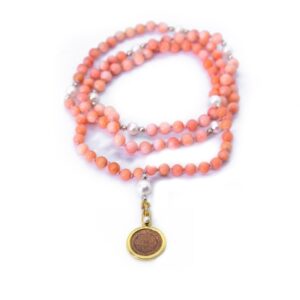
Pink Coral Stone
Some pink coral is found in Japan and comes in larger sizes which makes it great for jewelry. You can expect to see some pink coral heads weighing in at 15 to 20 pounds. The one thing you need to remember is the pink color is not all of the way through and it’s fairly common to see white veins running throughout.
Due to its composition, it is a great material for engraving or carving.
If you want to own the best pink coral then you’ll want to focus on a deep pink color which demands a premium price of $5 to $12 per carat.
Pleurocorallium secundums is the scientific name used to describe Rosato, Midway, or White/Pink coral. These gemstones occasionally feature red specks or uniform clear pink. They can be found off the coasts of Hawaii and Midway Island.
While Hemicorallium regale is a pomegranate color with various shades of uniform pink. These corals can be found off the coast of Hawaii and Midway Island as well.
Hemicorallium salcatum, Missu or Miss Coral, ranges from pink to violet in color. This coral can be found in the northern coastal waters of the Philippines.

White Coral Stone
Shiro or Pure White Coral (Pleurocorallium konojoi) is a milky white color that sometimes features pink or red specks. These corals live in the South China Sea and off the coasts of Hainan.
Shinkai or Deep Sea Coral (Hemicorallium laauense) can be bright white, clear pink, or white pomegranate with red spots of veins found off the coast of Midway Island, just northwest of Emperor Seamount.
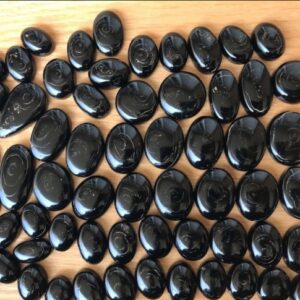
Black Coral Stone
Black coral can be found in both tropical and subtropical oceans. Forming these beautiful gemstones can take centuries, with individual colonies growing as little as one centimeter yearly.
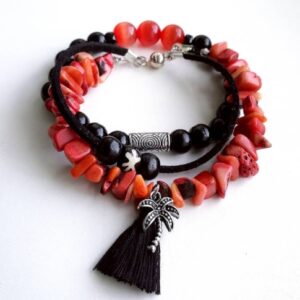
Orange coral Stone
The Cerasuolo, aka Momo or Satsuma coral, (Pieurocorallium elatius) can be bright red, orange, and flesh-colored with a white, lengthwise interior. There is also an albino variety known as Angel Skin, Magai, or Boké coral; it sports a delicate flesh-pink color of different intensities and is primarily found off the coasts of Taiwan and Japan.
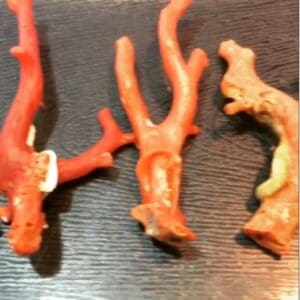
How Coral Is Formed
Precious coral is formed from the exoskeleton of tiny marine invertebrates known as coral polyps. A colony arrives in a particular region and begins creating exoskeletons on rocks, which grow upward in branch-like or fan formations. Precious coral isn’t harvested while they’re active living colonies because these will continue to grow larger. Instead, divers harvest the coral in areas where the colony has already moved on.
Deep sea precious corals from the Mediterranean do not serve as natural habitats for other marine species. However, Reef corals are a natural environment for various marine species, which makes them endangered in many cases, and there are laws to preserve them.
How Do I Know If My Coral Stones Are Real?
There are various ways to correctly identify coral to ensure it’s real. Red coral has a distinctive visible texture similar to wood grain. Take a peek at your specimen under a magnifying glass to see if the texture matches.
Hard plastic, glass, shells, and bones are the most common items used as imitation coral.
You will also want to look for any bubbles or molding lines in a specimen. These are identification markers that match glass imitations.
Some people use the milk test to check coral’s authenticity. Red coral causes milk to take on red or pink hues when placed in it. Plastic and glass imitations will not render this effect. However, dyed shells and bones will leave color behind, so combining various tests is best.
The vinegar test is another excellent one. Put your specimen in a bowl of highly diluted vinegar. Real coral causes bubbles in the form of calcium carbonate in the vinegar’s acidic environment. However, dyed shells and bones will yield the same result because they’re made of similar properties.
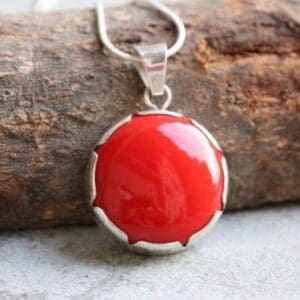
What Color Coral Is Most Valuable?
Red coral, also known as Ox Blood, has been the most expensive and valuable precious coral variety.
Is Coral Illegal To Own?
Coral is sadly becoming rare. Harvesting specimens in most parts of the world is restricted.
Be cautious, as any raw coral materials offered could be illegal to possess. To learn more about the restrictions and protections of specific coral species, check the US Fish and Wildlife Service and the Convention on International Trade in Endangered Species of Wild Fauna and Flora (CITES) websites.
- Identify Enstatite - March 12, 2024
- Identify Cerussite - March 3, 2024
- Identify Bytownite - February 18, 2024
